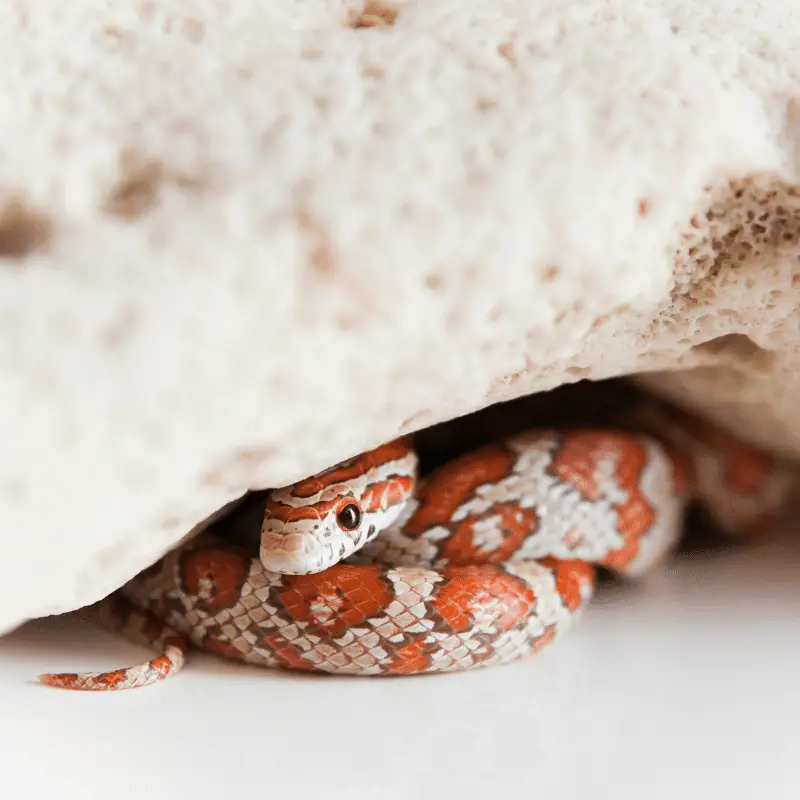The snake is a reptile that can be found on every continent except Antarctica. They are carnivores, and they prey on other animals like rodents, lizards, birds and eggs. Let’s learn more and find out if they are cold-blooded.
Yes, Snakes are cold-blooded (ectothermic), which means they rely on external heat sources to regulate their body temperature. They can not produce enough heat by themselves and need the sun or warm environments to survive. A snake will often bask in the sun during the day and hibernate at night when it’s colder outside.
Getting To Know The Snake
Snakes are cold-blooded creatures with no legs. They have scales and fangs.
A snake can be found in many different habitats, from the tropics to deserts. They’re not just found on land but also in water and trees! Some snakes lay eggs; however, others give birth to live young. There are over 3,400 species of snake around the world!
Hibernating to Conserve Energy
Snakes are cold-blooded animals that need to warm up to move. They do this by basking in the sun during the day, and then they hibernate at night when it’s colder.
When a snake is hibernating, its body temperature drops until it reaches about 40 degrees Fahrenheit (4 degrees Celsius). It also slows down its heart rate and breathing to conserve energy for when it needs to be active again in the day.
Why do snakes bask in the sun?
Snakes are trying to regulate their body temperature, which can be difficult when they live in a hot environment. Basking helps them maintain the right temperature for optimal health and survival.
How does a snake regulate its body temperature?
Snakes don’t have sweat glands, so they rely on external heat sources to regulate their body temperatures. When it’s cold outside, they might find shelter or move closer to an object that emits heat, like a rock or tree trunk. When it’s too hot outside, they will seek shade from the sun and try not to move around much as this increases their energy expenditure and makes them more vulnerable to predators. If you see a snake basking in your yard during these warmer months, leave it alone! It’s doing what it’s supposed to do – regulating its body temperature by absorbing sunlight!
The cold-blooded snake is not the only one feeling chilly this time of year. It relies on external heat sources to regulate its body temperature. It cannot produce enough by itself, so it must often warm up in the sun during the day or go into hibernation when nighttime sets in because it can’t survive at lower temperatures without some help from its environment.
Can a snake die from being too cold?
Yes, snakes are cold-blooded animals that can die if too cold. Therefore, they depend on external sources of heat to regulate their temperature. Snakes can survive in environments that range from temperatures as low as 36 degrees Fahrenheit; any lower will be fatal.
Can a snake die from being too hot?
The heat of summer can be a difficult time for a snake. It’s not just the harsh sun and high temps that are dangerous, but also the artificial heat sources for pet snakes. Snakes can suffer from hyperthermia when their body temperature rises to 95 degrees Fahrenheit or higher. A snake will overheat and have an uncontrolled fever which will be fatal.
Why are no snakes in the Antarctic?
It’s because it’s too cold for them. It gets so cold that a snakes body will freeze, and they’ll die within minutes.
Cold-Blooded Creatures
- Alligators
- Bees
- Crocodiles
- Fish
- Frogs
- Lizards
- Salamanders
- Sharks
- Snakes
- Toads
- Tortoises
Temperature is Essential (Snake Owners Advice)
- With a snake being cold-blooded, snakes need a place to warm up in the winter and cool down in the summer. Snakes also need some form of insulation from the ground or surface they’re resting on to maintain an optimal body temperature.
- Ensure you always provide enough shade for your pet snake if you want him/her healthy and happy!
- Snake owners need to provide reasonable living requirements so your pet can live comfortably. A lack of proper heating and cooling will lead to health problems such as respiratory infections, stress-related illnesses, and even death!

